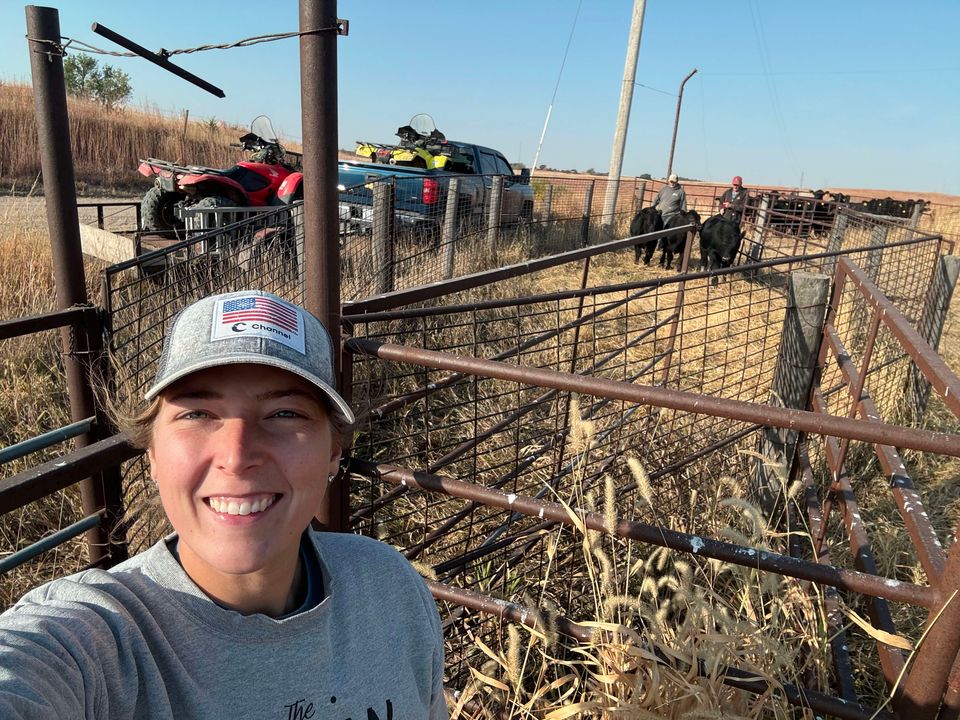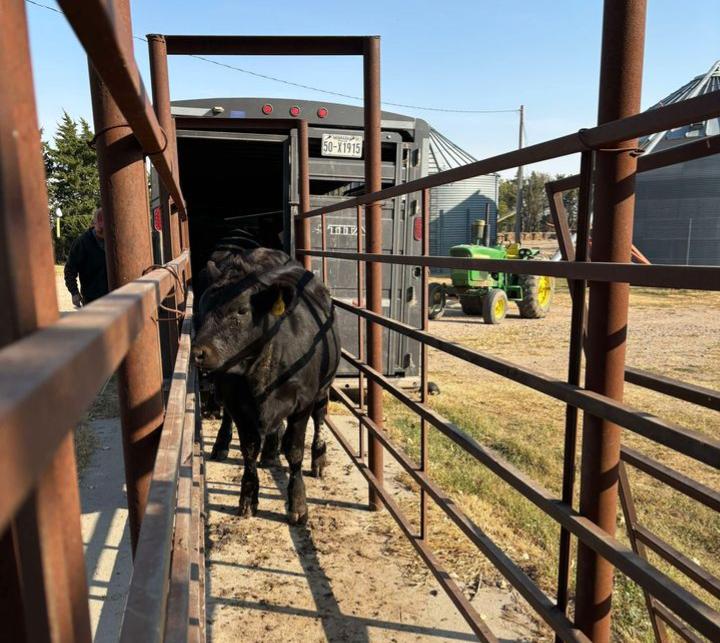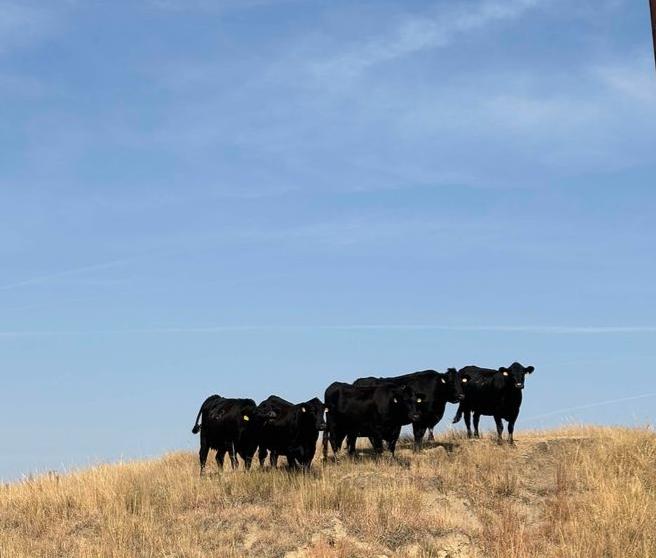By: Cathrine Frerichs
Fall is a busy time between back to school, the holidays and a new routine to settle into. This time of year is even busier for the agricultural community, as many days and nights for farmers are spent harvesting. The fall is also busy for those who raise cattle, as many juggle harvest, weaning calves, moving cows to cornstalks, winterizing equipment and much more. The beautiful thing about the agriculture industry is that there are many ways to steward the land, grow crops and care for livestock. There is not necessarily a right or wrong way; each farm’s practices are meant to fit their circumstances, community and history.

Our family has a row crop and cow-calf operation, and the fall is a busy time. It is a tricky balance keeping harvest moving forward while managing the cattle. Between harvesting different fields, we find time to wean calves sometime at the end of September to the beginning of October. Earlier in the summer, we take creep feeders to the pastures so the calves can eat grain with higher energy and protein nutrients. A creep feeder is a type of feed bunk that allows only the calves to eat because the grain is too high in nutrients for the cows. This helps them to grow with a supplement in addition to the milk and grass they have been eating. This also helps them learn how to eat grain. Towards the end of summer, the calves have had time to grow in size, to be large enough to need their mother’s milk no longer and to eat forage and grains. Weaning serves two primary purposes: one, it allows the cow to recondition (build her body back up), and two, it helps the calf enter the next growing phase.


Where The Journey Starts
When weaning calves, the day starts with hooking up trailers, loading up medical supplies, grain, four-wheelers and all the “hands on deck” who are there to help. Once we are at the pasture, weaning calves involves bringing all the calves and cows into a catch pen from the pasture. We use grain, a horn honk, four-wheelers and a “come boss call” to move the cows and calves from any pasture corner to a smaller catch pen with a load outshoot. Once all the animals are caught, we take the time to sort the cows out of the pen and back into the pasture. Then comes the process of loading the calves onto a trailer and hauling them to the home place. As the calves are moved down the loadout shoot, they are given two different shots that help prevent pneumonia, pink eye and other diseases, along with a pour-on preventative that helps with lice or other parasite mitigation.


What Backgrounding Involves
Once the calves are brought to the home place, they are unloaded into different lots where they will have haylage and creep feed to eat. Haylage is chopped hay with distiller grain added as an energy and protein source. Keeping the calves in a lot like this before they go to the sale barn is a process called backgrounding. Backgrounding involves maximizing the use of forages and feeding them to calves while they adapt to being off the cow until they are placed in a feedlot. To help our calves adjust, we run a radio to help them get used to people’s voices, and we keep a close eye on them to make sure they do not become ill during the period of change. We go through an additional step separating the steer calves from the heifer calves. The steer calves will go to the sale barn before the heifers. Being a cow-calf operation is rewarding when you can keep back strong heifer calves to add as replacement heifers to your herd. It is exciting to see the calf’s growth from when they were a newborn calf in the spring to now as a grown calf.
While the fall months are full, they are my favorite, not just because of the pumpkin spice lattes, fall festivals and cooler weather. They are my favorite because the family farm bands together to get it all done. We get to see the fruits of our labor through harvest and the joys of life as the calves come home.



